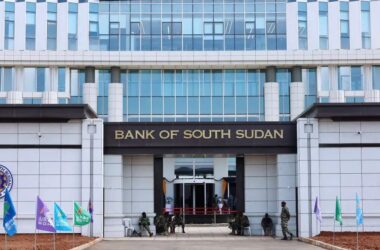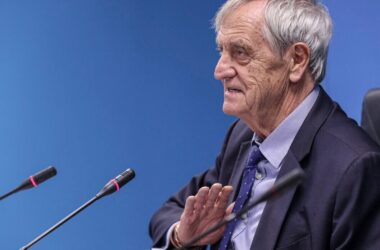The SPLM-IG has confirmed that 60 percent of the unified forces will be for the government of South Sudan while 40 percent will be given to the two parties of the agreement having political wings.
Tut Gatluak said issues of the negotiation on the percentage were decided at a ratio of 60 to 40. He said parties to the agreement wanted a fifty to fifty percentage of the forces though Sudan helped in the decision to negotiate from a 60 to 40 % ratio.
“It has taken a bit long because people were trying to decide to the percentage and distribution of positions,” he said.
He said the SPLM/IO later agreed stating that they never wanted to take people back to war and South Sudanese were tired of the occurrence of war.
“There is a message that they were ready to accept the peace in favour of the people of South Sudan as they are really tired of war,” Tut said.
In another development, the Minister of Cabinet Affairs Dr. Martin Elia Lomuro applauded the great move of the complexion on the chapter two of the agreement.
“The R-ARCSS itself is a great change from the 2015 agreement. Now that we have one army and now we have powers that were Presidential in-nature and were given duly to the First Vice President to reverse and readjust the way in which collegial governance between the First Vice President and the President would be conducted,” he said.
He said the SPLM/IO were to be blamed for the nine months’ delay that happened due to trust gap for their security in Juba when asked to return to Juba.
“It took three months for them to come to Juba for the public rally which was organized by President Salva Kiir Mayardit,” he cited.
“We lost four months before we could even start writing the budget for the NPTC for implementation of the Pre-Transitional Period. So the extension in May was justified,” he said.
Dr. Lomuro cited chapter two of the agreement as a critical challenge that was holding the graduation of the unified forces.
“There had to be sacrifices. This army whether they were SSPDF, SPLM/IO or National Security they were in the same force so the seniority of the force was well known,” he said.
He assured that the country would not go back to war as command structures are being managed.
“We have divided a command structure where 60 is for the government and 40 is for opposition and will be shared between the only two partners of the agreement that have a military wing,” he said.
He called for cooperation between the SPLM/IO and the SPLM/IG as management and position as well as job description in positions for the normal standards for the job will be another tedious work.
He said decisions on elections will be made later when unification of forces has been made and decisions whether to give time or to rush into the election.
“When we finish with the command structure, we will come back and develop the road map realistically then find what is to be done, how long does it take; the cost and who is going to do what. And if it doesn’t fit to the agreement then factors to the agreement will legitimately ask themselves, do we need to rush and get it wrong or should we talk to ourselves and give ourselves a bit of time so that when it happen, there will be no rebellion,” he said.


